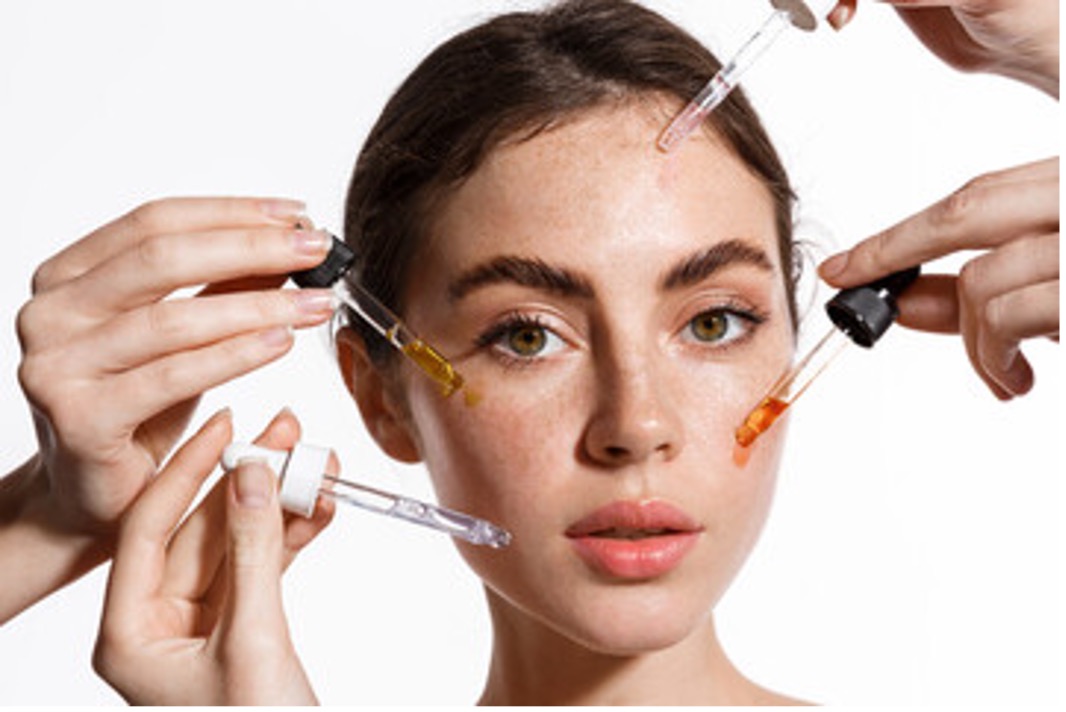Are active ingredients in skincare worth the hype? We’re diving into this topic in our latest blog as part of our Dermatologist’s Take on Popular Trends Series, active ingredients edition. Dr. Emily Fridlington gives us the inside scoop on what active ingredients are and how to use them properly below!
What are active ingredients?
Dr. Emily: In the strictest sense, and according to the FDA, active ingredients are considered topical drugs. Any ingredient classified as a drug by the FDA must be designated “active” on the product label and approved for both safety and efficacy by the FDA before being brought to market. An ingredient is classified as a drug if it produces a chemical or biological effect intended to treat, prevent, or cure disease and alter the structure or function of the body.
A great example is zinc oxide in sunscreen.
This term, active ingredient, is often casually applied to skincare and ingredients meant to alter the appearance of the skin. These are not regulated by the FDA and are considered cosmetic ingredients. Common examples include vitamins C and E, hyaluronic acid, ceramides, pre- and pro-biotics, retinol, and over-the-counter azelaic acid, to name just a few.
When should you use active ingredients?
Dr. Emily: Products with active ingredients can be used daily or combined, depending on the intended purpose.
For example, daily facial sunscreen is the hallmark of a good skincare routine. Antioxidants such as vitamin C can be combined with sunscreen to mitigate free radical damage and help prevent various signs of photoaging. Ceramide or hyaluronic (HA) based lotions or emollients can also hydrate the skin and provide barrier protection alone or in combination.

How often should they be used?
Dr. Emily: Many active ingredients, such as azelaic acid, can be used daily for inflammatory conditions such as rosacea. As well as acne and retinol products primarily used for photoaging.
When should you aim to avoid active ingredients?
Dr. Emily: While certain active ingredients can help with skin barrier repair (such as ceramides and HA), others may irritate already sensitive or irritated skin and should be avoided in those circumstances. Benzoyl peroxide is an excellent example of that and can be beneficial as an antibacterial for treating acne but can also cause stinging/redness and skin irritation.
Can you use more than one at a time?
Dr. Emily: Yes, absolutely. In fact, we strongly encourage the use of combination products such as sunscreens and antioxidants (vitamin C, E, etc.)
Are there any risks associated with use?
Dr. Emily: Sensitivity and irritation are the most common “risks.” Unfortunately, given the lack of FDA testing/approval for efficacy, products can make many claims regarding their active ingredients that may be over-hyped.
How would you rate active ingredients on the glow-up potential scale of 0-5?
Dr. Emily: For our Dermatologist’s Take on Popular Trends Series, active ingredients edition, we rate this trend a definite 5! At a minimum, everyone can benefit from some form of active ingredients, be it photo-protection or hydration. We highly recommend it.
 It’s time to serve the skin that serves you! Schedule an appointment at Alamo Heights Dermatology for a chance at the skin you deserve. Visit our website or call us at (210) 255-8447 to learn more about how you can benefit from our services.
It’s time to serve the skin that serves you! Schedule an appointment at Alamo Heights Dermatology for a chance at the skin you deserve. Visit our website or call us at (210) 255-8447 to learn more about how you can benefit from our services.
Resources:
https://thegoodfaceproject.com/articles/skincare-active-ingredients

